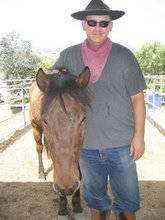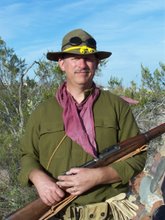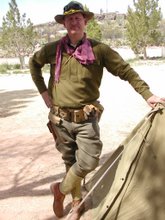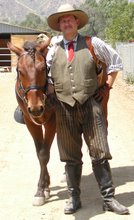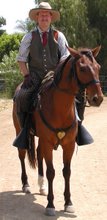Lately it seems that I've been on this strange desire to delve into dressage in a big way (for me anyway) and especially collection.
Today Max and I took our customary weekly lesson and naturally the focus of the training was on various aspects of collection at the walk, trot and canter. Also, attention was paid to transitions between all three gaits with the focus on SMOOTHLY making those transitions and maintaining a seat on the vertical- I sometimes have a tendency to shift forward.
While working on collection at the trot and especially at the canter, for the first time I REALLY felt/experienced what it means to have a horse shift their weight onto the haunches. It's a weird feeling and if you didn't know what was going on, you would think something weird/bad is going on- in some instances it almost feels like the horse is literally falling apart.
The think that never fails to blow my mind here is that Max and I are getting to the point where in many instances Max VOLUNTARILY begins to collect up with little urging on my part. I can guarantee that NO amount of muscling on the reins or other force on my part is going to force Max to do what he's doing- it's all coming from him.
Now this by no means absolves me of my responsibilities as a rider and in fact, it demands even greater attention and physical effort- the rider cannot just sit and ride their way through- they have to actively ride this. What's also key is that I have to constantly ensure that my seat is correct- most of the time this means being on the vertical (i.e., I'm sitting perpendicular to the horse's back)and allowing my body or legs to swing forward (it's so easy to do), especially when collecting at the canter.
While collecting at the canter, as the horse collects up, the front of the horse seems to grow a little taller and the haunches drop down (duh!) and my tendency is to follow the horse's front with my body so that I'm leaning forward of the vertical. Naturally, this may seem to be the right thing but it's not and I have to constantly remind myself. Moreover, because the half-halts require "tucking" your pelvis underneath you (the best analogy, and it's a bit crude, is imaging having a hard bowel movement- yeah gross, but it's it the only analogy that works, at least for me). By allowing yourself to move forward, your actually lifting your rear off the saddle and thus you can't engage in complete half-halts.
As a final note, I've also begun to be more aware of just what my body is supposed to be doing in half-halt- it's almost like coiling oneself a like spring in the shape of a "c" with the pelvis being one end and the diaphragm being the other. You really learn to use those muscles!
Although I don't pretend to be any sort of an expert and I'm sure that I've missed a lot of technical points, I do find it amazing, especially since most of the people who do this started at a very young age and I started WAY later.
Finally, I also think Max is getting better at this and there's been times where he's now collecting spontaneously while trotting and cantering (at times when I don't necessarily want it)- very interesting! :-)
Today Max and I took our customary weekly lesson and naturally the focus of the training was on various aspects of collection at the walk, trot and canter. Also, attention was paid to transitions between all three gaits with the focus on SMOOTHLY making those transitions and maintaining a seat on the vertical- I sometimes have a tendency to shift forward.
While working on collection at the trot and especially at the canter, for the first time I REALLY felt/experienced what it means to have a horse shift their weight onto the haunches. It's a weird feeling and if you didn't know what was going on, you would think something weird/bad is going on- in some instances it almost feels like the horse is literally falling apart.
The think that never fails to blow my mind here is that Max and I are getting to the point where in many instances Max VOLUNTARILY begins to collect up with little urging on my part. I can guarantee that NO amount of muscling on the reins or other force on my part is going to force Max to do what he's doing- it's all coming from him.
Now this by no means absolves me of my responsibilities as a rider and in fact, it demands even greater attention and physical effort- the rider cannot just sit and ride their way through- they have to actively ride this. What's also key is that I have to constantly ensure that my seat is correct- most of the time this means being on the vertical (i.e., I'm sitting perpendicular to the horse's back)and allowing my body or legs to swing forward (it's so easy to do), especially when collecting at the canter.
While collecting at the canter, as the horse collects up, the front of the horse seems to grow a little taller and the haunches drop down (duh!) and my tendency is to follow the horse's front with my body so that I'm leaning forward of the vertical. Naturally, this may seem to be the right thing but it's not and I have to constantly remind myself. Moreover, because the half-halts require "tucking" your pelvis underneath you (the best analogy, and it's a bit crude, is imaging having a hard bowel movement- yeah gross, but it's it the only analogy that works, at least for me). By allowing yourself to move forward, your actually lifting your rear off the saddle and thus you can't engage in complete half-halts.
As a final note, I've also begun to be more aware of just what my body is supposed to be doing in half-halt- it's almost like coiling oneself a like spring in the shape of a "c" with the pelvis being one end and the diaphragm being the other. You really learn to use those muscles!
Although I don't pretend to be any sort of an expert and I'm sure that I've missed a lot of technical points, I do find it amazing, especially since most of the people who do this started at a very young age and I started WAY later.
Finally, I also think Max is getting better at this and there's been times where he's now collecting spontaneously while trotting and cantering (at times when I don't necessarily want it)- very interesting! :-)





















